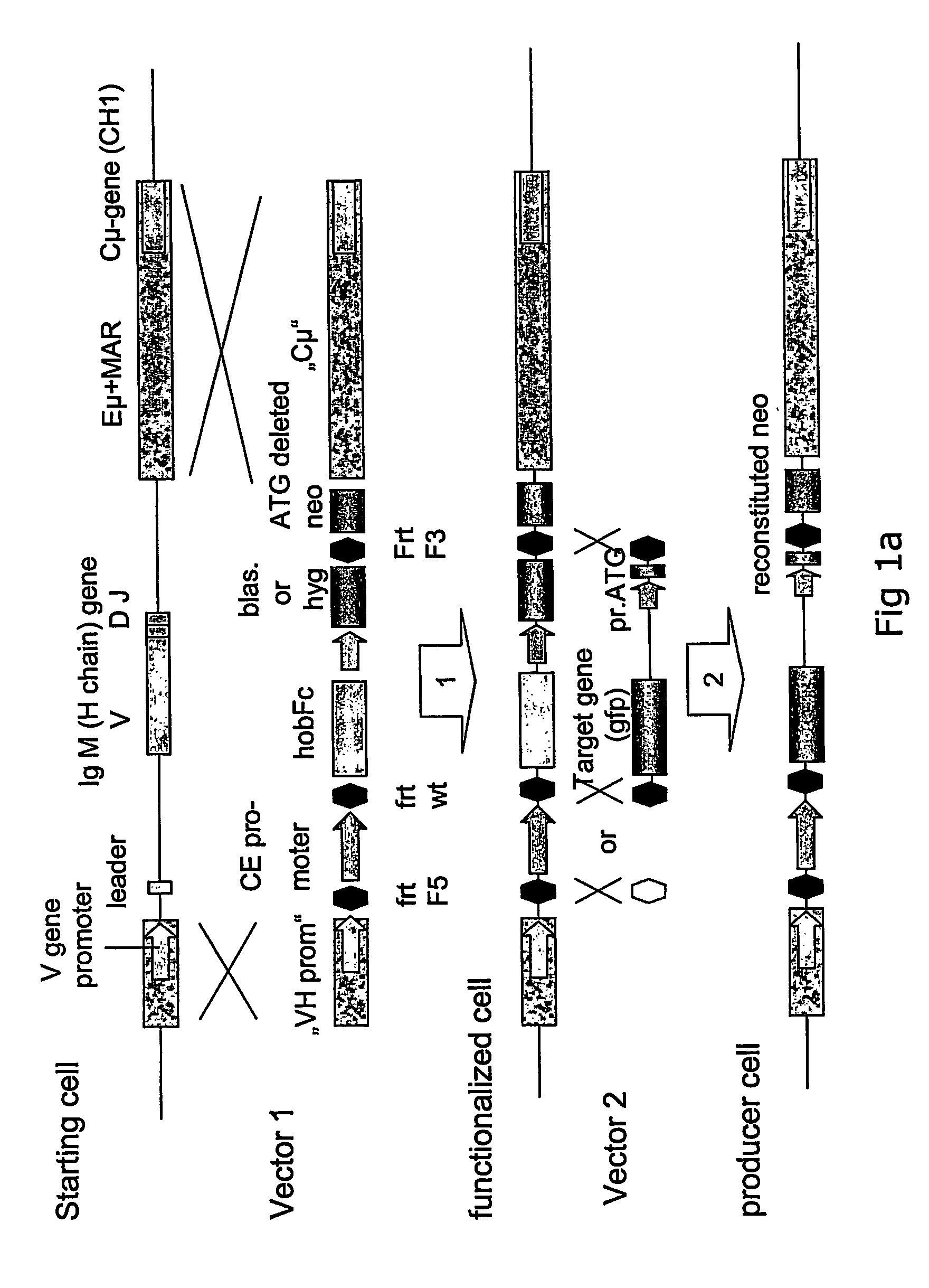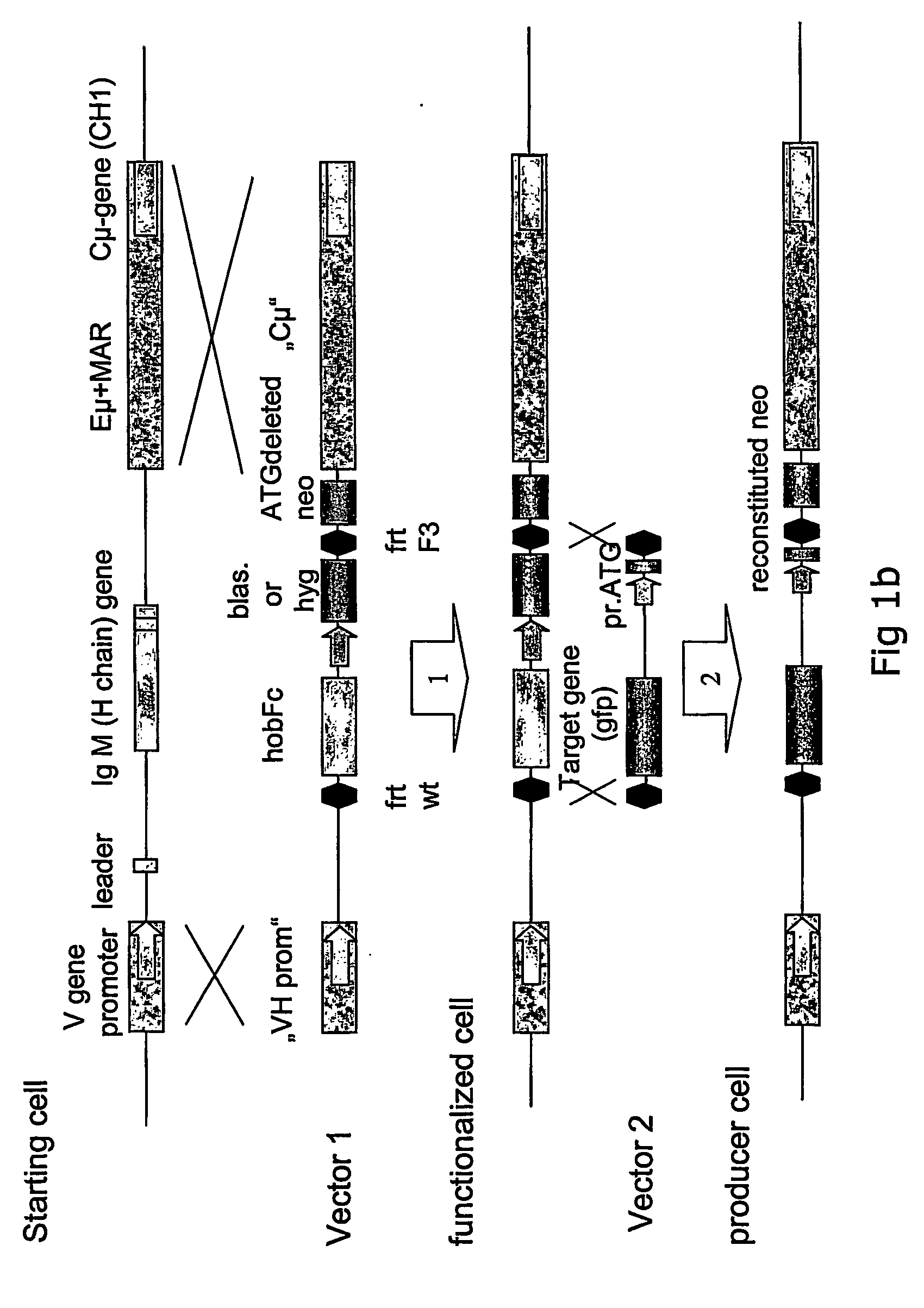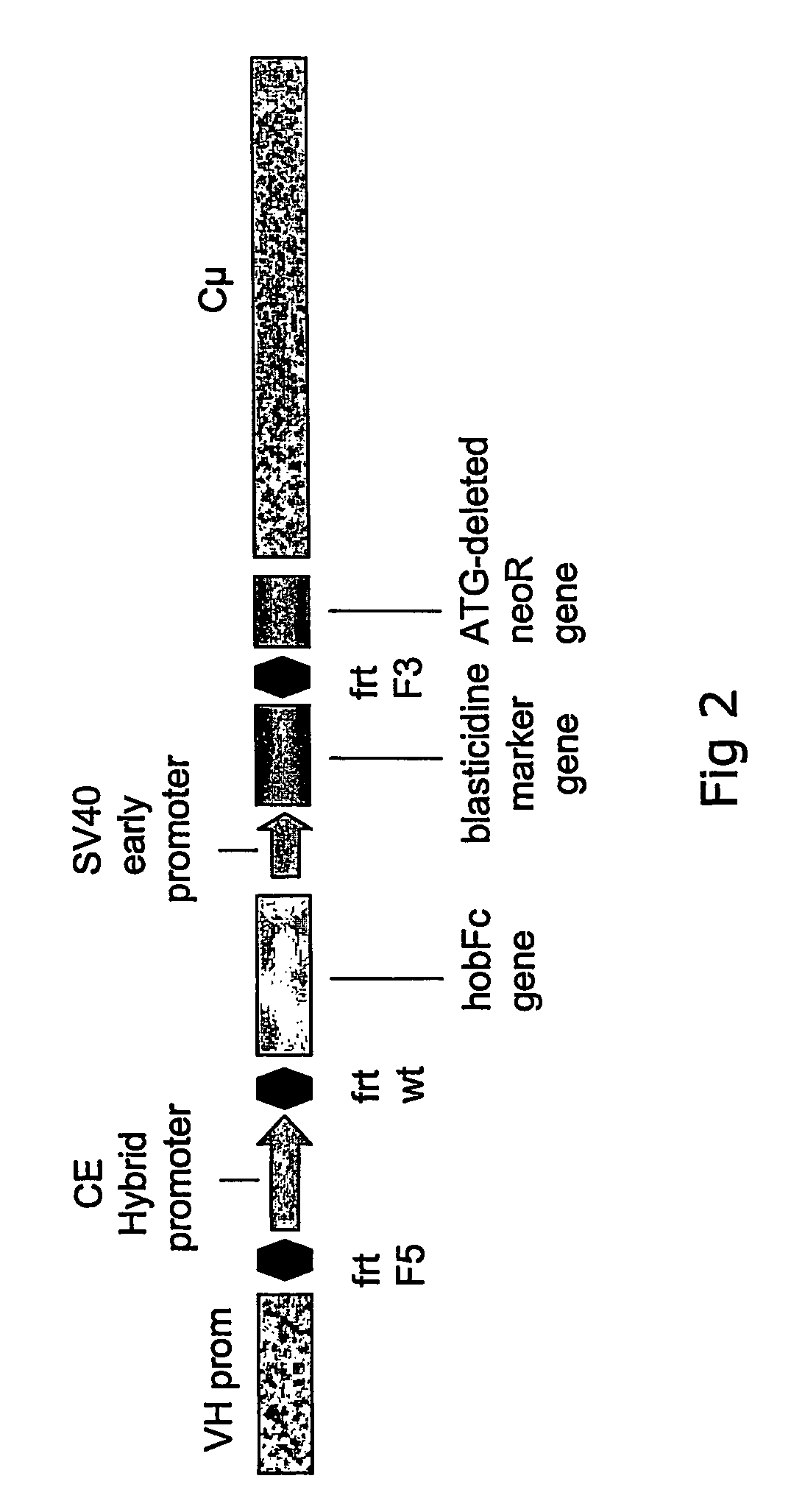High yield heterologous expression cell lines for expression of gene products with human glycosylation pattern
- Summary
- Abstract
- Description
- Claims
- Application Information
AI Technical Summary
Benefits of technology
Problems solved by technology
Method used
Image
Examples
example 1
Preparation of a Targeting Vector Specific for the IgM Region of H-CB-P1 Cells
[0094] The recombinant gene was to be inserted into the IgM sequence region because it is well-known that antibodies are highly expressed and secreted proteins. The final targeting vector hence required sequences that had 100% homology to the targeted genomic IgM sequences. For the basic targeting vector pVHCμ the VH region of 2 kb and the Cμ intron region of 7.4 kb in length were chosen (see FIG. 3). Both regions were isolated as PCR fragments using polymerases with proofreading activity (proofstart polymerase (Qiagen)), subcloned into a pCR 4BluntTOPO vector (Invitrogen) and finally combined in one vector named pVHCμ (see FIG. 3).
[0095] Preparation of plasmids pVHCμCESHhobFc and pVHCμHhobFc: The basic targeting vector pVHCμ does not have an endogenous cassette yet. The endogenous cassette containing the CE promoter, the place holder gene hobFc, three FRT recombination sites as well as a hygromycin resi...
example 2
Selection of hobFc Clones
[0099] Electroporation: H-CB-P1 cells were electroporated with plasmids pVHCμCshobFcblas, pVHCμhobFcblas, pVHCμHhobFc and pCShobFcblas. In order to determine the transfection efficiency, cells were transfected with plasmid pGFPN1VA and as mock control, cells were electroporated with a water sample. The transfection efficiency was found to be at approximately 20%. On day 2 post-electroporation depending on the transfected plasmid either hygromycin or blasticidin was added to the culture medium. When mock-transfected cells were all dead, cells from the other transfection reactions were harvested and re-seeded at a density of either 1 cell or 5 cells per well into a 96 well plate. Cells were continued to be cultured with medium supplemented with the appropriate antibiotic.
[0100] To optimise the selection conditions cells were seeded at 104, 105 or 106 cells / 20 ml into T75 flasks two days post-electroporation. The medium was supplemented with either 5 or at 10...
example 3
Detection of Homologous Insertion into the IgM Locus
[0103] For the design of the targeting vector the rearranged immunoglobulin heavy chain locus was assembled based on the cDNA sequence of the antibody and human genome sequence information. To ensure that the production of IgM was disrupted by the targeting approach, the complete leader sequence including the ATG, the V, D and J genes were omitted from the targeting vector and deleted from the genome via a single homologous recombination event. Hence the replacement type targeting vector contained isogenic sequences from the IgM locus to allow the directed cross over as well as the hobFc gene, blasticidin and ATG deleted neomycin resistance genes. Since only one rearranged active IgM locus on chromosome 14 is present in the starting cell line H-CB-P1, the homologous recombination event completely abolishes IgM expression which is detected by fluorescent antibody staining and supernatant immunoblotting using an anti-IgM antibody.
[...
PUM
| Property | Measurement | Unit |
|---|---|---|
| Substance count | aaaaa | aaaaa |
| Substance count | aaaaa | aaaaa |
| Temperature | aaaaa | aaaaa |
Abstract
Description
Claims
Application Information
 Login to view more
Login to view more - R&D Engineer
- R&D Manager
- IP Professional
- Industry Leading Data Capabilities
- Powerful AI technology
- Patent DNA Extraction
Browse by: Latest US Patents, China's latest patents, Technical Efficacy Thesaurus, Application Domain, Technology Topic.
© 2024 PatSnap. All rights reserved.Legal|Privacy policy|Modern Slavery Act Transparency Statement|Sitemap



